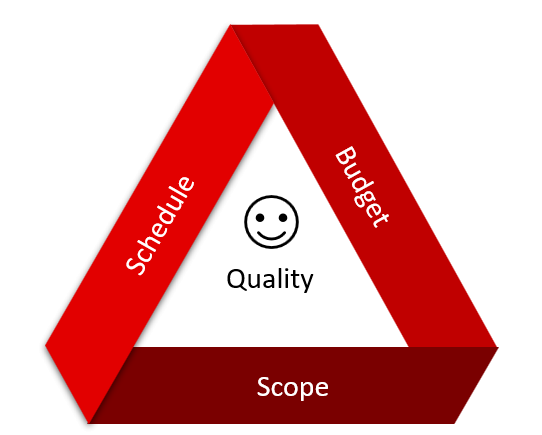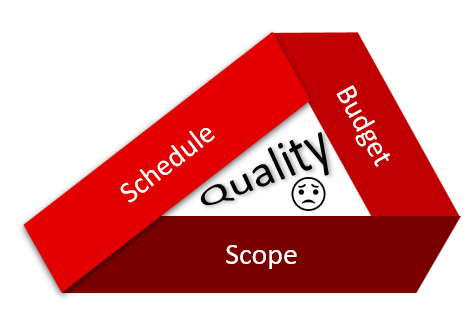
Apart from a poor attempt at doing puns (I normally leave that to hubby!) that is exactly what a Salesforce Discovery is meant to do. To understand what is involved in the Implementation process, to create that change that takes an organisation from point A to point B.
Generally, point A is the current state – unhappy, full of pain* and unease, and point B is the future state – all problems solved, happy users and systems that work.
How much will it cost the business to get from A to B? What will be involved? How long will it take? Will any additional procurement (e.g. people, software) be required to get there?
This article also addresses the question most Consulting Partners face: What do you do when the client does not have sufficient budget to cover everything they want you to deliver?
SoW: Statement of Work
In my previous article, I talk about the processes involved within the Discovery phase. This includes running ‘as-is’ and ‘to-be’ workshops and producing a list of documentation (or Deliverables) that include some or all of the following components:
- Functional & Non-Functional design
- Reporting & Analytics Requirements
- Technical landscape (Current and future state)
- Integration Interfaces
- Data migration plan
- Test strategy and plan
- Deployment plans
- Estimated Project plan and costing
These deliverables form the ‘map’ of how we get to the future state. The Project Plan and Costing is developed from the other deliverables and will be a key input in the formation of the Statement of Work for the next phase of the project – The Implementation (or Build). This will detail what would be in scope, and will include estimated timeline, resources required and most importantly – the cost.
Invariably, the cost is almost always higher than what is expected. I’ve never seen a client tell me how surprised they are at a low quote for the required work. What happens next is an attempt to bring the number down by ‘artful negotiation’, or an attempt to chip away and remove items without really understanding the impact.
“Don’t worry – we’ll get the project team to do the testing, and also the training and support. It’s much cheaper than getting you consultants to do it.” That is absolutely fine if the project team (on the client side) is a dedicated one.
Frequently, they are resources who also have their ‘day jobs’, either supporting the business, going out to close sales, putting together and running financial reports and other MI reports, or managing their call centre teams.
What generally happens is if the business insist that project team dedicate themselves to the project without providing relief or getting assistance for their day-to-day activities, the project (or their business operations) is likely to suffer.
“Can we not do ALL this with your remote team? Their day rate is much lower than your resources based in the UK.”
When a project is initially launched, on-site meetings and workshops are crucial to setting the stage and relationship. Once trust within the team and ways of working for the project is established where the remote element has been seen to work well, this is a feasible solution. However, executing a whole project with a remote team isn’t not something I would recommend, as it is far from easy.
Most businesses are usually concerned with lowering the SoW cost as low as possible without either mitigating the risks of doing so or putting actions in place that would allow them to take on project activities effectively.
This is where things get a bit tricky; when you are negotiating the price. The key thing to remember is that the Iron Triangle of Project Management holds true.
Don’t think of bending the Iron Triangle!
Let’s assume that all the concerns above have been addressed – both the Client and the Consulting Partner has agreed that proposed way of working, with the requisite number of resources (either onshore or offshore) and timeline is sensible and the only thing left to discuss is the actual price.
This is when it helps to understand this concept called the Project Manager’s Iron Triangle. You might be able to bench press 2 elephants or pulverize a walnut between your thumb and pinky fingers, but you’d be courting danger if you attempt to deform this (hypothetically scaled) equilateral triangle.
It is the relationship between Schedule (timeline), Cost and Scope that results in a quality delivery that is at an equilibrium.

In a perfect world, if there is enough budget and time to develop, build and deploy all the requirements articulated by the business, the result would be the best outcome: Happy users, and a system that does what everyone wants it to, within budget and timeline.
Most of the time, this happens when the client wishes to reduce the budget without changing the timeline or scope.
What would happen if you attempt to fit 100 hours of work in 80 hours? Short cuts look really tempting, errors creep in, and the resulting mental fatigue and stress will often cause friction within the team.
The tangible and intangible costs of unrealised risks and potential technical debt (future re-work that might be needed due to taking a quicker, less efficient approach than a better/more suitable solution) is often not obvious or disregarded at this stage.
More often than not, there is a very optimistic feeling that “the wind will be at our backs, the sun will shine every day and nothing will go wrong, so the risks in the RAID log will be marked with low probability.”
Unless the relationship is based on mutual trust and understanding, with the right people in the team, both internally in the business and externally with the right Salesforce Consulting Partner, a lot of those risks could turn into issues that translates into those tangible and intangible costs becoming realised in the long run.

What is the solution if the client needs to keep to the scope but they do not have the budget?
A discounted on the quoted price.
If there is a deadlock on the price (the Consulting Partner wants to secure the Client’s business but the quoted price is too high for the Client’s budget), then the Consulting Partner must lower the day rates (not the estimation or # of days required to complete the project). This would allow the project team space to do their work well.
Note to young Consulting Partners: if you find that these internal ‘energetic discussions’ occur frequently between your Account Management and Delivery Team, it means you need to work on a standard code of practice and ensure your teams are aligned. Lowering day rates generally impact the remuneration for the Account Management team, and there should be a common vision of what is the best for the customer, the project, and the team.
Fixed Price or Time and Materials
The Discovery Phase itself is generally a Fixed Price gig. This is because the timeframe for this piece of work is known (x number of weeks), as well as the number of consultants required for the Discovery. The outcome of the Discovery is an SoW, or a pricing for the remaining Build phase, and can either be a Fixed Price quote, or an estimated Time & Materials quote.
Which is more common?
This depends on the client’s situation. There are many reasons why a business might want to enter a Fixed Price contract with the Consulting Partner, many of which are rooted in the need for certainty and the perception of risk.
A Fixed Price contract does not depend on the resources or time expended by the Consulting Partner to complete the project. The Consulting Partner will add a buffer within the cost to take into account any risks within the project which might become an issue, for example, having to deal with an unknown technical implication of an upcoming Salesforce release that could potentially compromise the end solution.
For this model to work properly for both the client and the Consulting Partner, the SoW must be as detailed as possible, so that all parties are on the same page in terms of where expectations of how the final solution will look like.
This means that the requirements captured during Discovery must be as detailed as possible, and if User Stories are used for documentation, then very tight Acceptance Criteria must be outlined in order to exclude ambiguity.
The client must know exactly what they are getting, and there should be no room for uncertainty. Note that a Statement of Work is a contractual document, and as such, vague language, or lack of detail can potentially cause the relationship to deteriorate when opinions differ as to what functionality was understood to be delivered.
A Time & Materials (T&M) Contract is one which the client pays for the time and resources used to complete the work. This could end up cheaper or more expensive than the Fixed Price option, but you would probably only be able to figure it out after the end of the project.
Broadly, I believe that if the client and the Consulting Partner have a good solid relationship based on mutual respect and trust, the T&M pricing model makes the most sense in terms of producing the best outcome at an investment value that works.
Rules: Setting up the Salesforce Project for Success
If the Discovery process is done right, then the Implementation process has a pretty optimistic chance of running smoothly.
- Get the people element right – the client should hire (or promote internally) the best Salesforce Champion, and go through due diligence to choose the right Salesforce Consulting Partner with whom they can work with.
- The client should take steps to allow their internal project team the time and space to focus on the project. They will need to attend all the workshops and help the Consulting Partner to truly understand their business in order to design the best approach in using the Salesforce platform for the client’s business.
- Attempting to reduce the SoW price by reducing the effort required to complete the work puts pressure on the project team which could have long term impact on their mental/emotional health.
- Ensure the SoW is written with clarity, so that both parties are absolutely clear about what will be delivered.
- If a Fixed Price model is necessary, then the project team should jointly work to document all requirements in as much detail as possible.
Do the Discovery right, and you’ll embark on a journey that is challenging, exciting, nerve wracking, with many moments of win and delight, when you get to work with amazing people for a meaningful purpose.
You shall definitely reap what you SoW.
* This pain is generally the tipping point that forces an organisation to push for a change. Otherwise, most just limp along and just muddle through until either they initiate the change, or until change is forced upon them.
